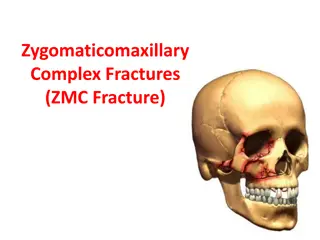Understanding Different Types and Classifications of Heliports
Heliports, helidecks, helistops, and helipads serve as key landing areas for helicopters. They come in various classifications including military, federal, private use, public use, commercial service, and personal use. Factors influencing site selection include traffic considerations, obstruction avoidance, noise disturbance minimization, and access to transportation. Key factors also include cost-effectiveness, multiple approach paths, traffic conflict avoidance, turbulence consideration, and emergency landing provision.
Download Presentation

Please find below an Image/Link to download the presentation.
The content on the website is provided AS IS for your information and personal use only. It may not be sold, licensed, or shared on other websites without obtaining consent from the author. Download presentation by click this link. If you encounter any issues during the download, it is possible that the publisher has removed the file from their server.
E N D
Presentation Transcript
HELIPORTS Engr. Ian Talag
Heliport A heliport is an identifiable area on land or water structures, including buildings or facilities thereon, used or intended to be used for the landing and take off of helicopters or other rotary wing aircraft. A helideck is a heliport located on a floating or an offshore structure. A helistop is an area developed and used for helicopter landings and take offs to drop off or pick up passengers or cargo. A helipad is a paved or other surface used for parking helicopters at a heliport.
Classification of Heliports Military Heliport - facilities are operated by one of the branches of the armed services. The design criteria are specified in the branch of the service and usually prohibit non military uses. Federal Heliport facilities are operated by a non military agency or department of the federal government. They are used to carry out the functions appropriate to the agency. Private Use Heliport - facilities are restricted in use by the owner. These may be publicly owned, but their use is restricted, as in police of fire department use.
Classification of Heliports Public Use Heliport - facilities are open to the general public and do not require the prior permission of the owner to the land. The extent of the facilities available may limit operations to helicopters of specified sizes or weights. Commercial Service Heliport - these public use and public owned facilities are designed for the use of helicopters in commercial passenger or cargo service which enplane 2500 passengers annually and receive scheduled passenger service with helicopters. Personal Use Heliport - facilities are used exclusively by the owner.
Factors Related to heliport site selection: The best locations to serve potential traffic The provision of minimum obstructions in the approach and departure areas The provision of minimum disturbance from noise and desirable location with respect to adjacent land use The provision of adequate access to surface transportation and parking
Factors Related to heliport site selection: The minimization of cost to acquire and develop The provision of two approach paths separated by at least 90 degrees and oriented with respect to prevailing winds The avoidance of traffic conflicts between helicopters and other air traffic The consideration of turbulence and visibility restrictions presented by nearby buildings The provision of emergency landing areas along the entire route for single engine helicopters.
Principal Components of a Heliport final approach and touchdown area, the touchdown and liftoff area, for large heliports, taxiways, helicopter parking areas, and the terminal building area.
Final Approach and Takeoff Area The final approach and takeoff area (FATO) is a surface from which the helicopter can land or take off. The FAA allows the FATO to be any shape as long as it is enclosed by a square of the dimensions indicated in Table 15-2. ICAO specifies that the FATO is a circle.
Typical Heliport Layout
Final Approach and Takeoff Area Its size depends primarily on the overall length of the largest helicopter to be accommodated by the heliport. For approach and takeoff area is 300 ft wide by 1225 ft long and incorporates a final approach reference area (FARA) which is an obstruction free area 150 ft by 150 ft located at the far end of the final approach and takeoff area. precision instrument operations the final
Touchdown and Liftoff Area Within the final approach and takeoff area, an area is designated for the normal everyday landing of helicopters. The TLOF area is usually defined by a solid border painted on the pavement surface. The recommended dimensions of the touchdown and liftoff area are given in Table 15-2.
Peripheral Area A peripheral or clearance area surrounding the final approach and takeoff area is recommended as an obstruction free safety zone. The area should be kept free of objects hazardous to the operation of helicopters. The clearance from the edges of the final approach and takeoff area required for this area is also given in Table 15-2.
Terminal Area At heliports where the volume of traffic is relatively small, the loading and unloading of passengers can be accomplished within the final approach and takeoff area. As traffic increases, it becomes necessary to provide additional space for the parking of helicopters and passenger processing. This is usually accomplished on a helipad which is an area adjacent to the terminal building for processing passengers.
Terminal Area This area provides for one or more parking spaces for helicopters and is similar in nature and function to the gate or ramp area provided on the apron adjacent to airport terminal facilities. Clearances between adjacent helicopter parking positions are provided so that a separation is provided between the rotor planes of helicopters as shown in Table 15-2. The helipad is connected to the final approach and takeoff area by taxiways and taxilanes. The width of these taxiway routes and the taxilanes adjacent to the helipad are given in Table 15-2.
Marking of Heliports The primary purpose for marking heliports is to identify the area clearly as a facility for the use of helicopters. The requirements for marking heliports are specified by the FAA and the ICAO. Essentially these requirements consists of painting an equilateral square with an H in the center of the touchdown and liftoff area. For hospital heliports a white cross is also inscribed within the square along with the letter H as shown in Fig. 15-6
Marking of Heliports Marking delineating the edges of the final approach and takeoff area should be broken white lines whereas on the touchdown and liftoff area the edges should be delineated by continuous white lines. Taxiway centerlines are delineated by solid yellow lines and taxi route centerline and apron edge markings should be solid yellow lines. Taxiway edges should be marked by a double solid yellow line.
Lighting of Heliports For operation during hours of darkness various types of lights are suggested. The amount of lighting depends on the character and volume of operations. More lighting is required for scheduled air carrier operations than for private heliports with occasional use.























